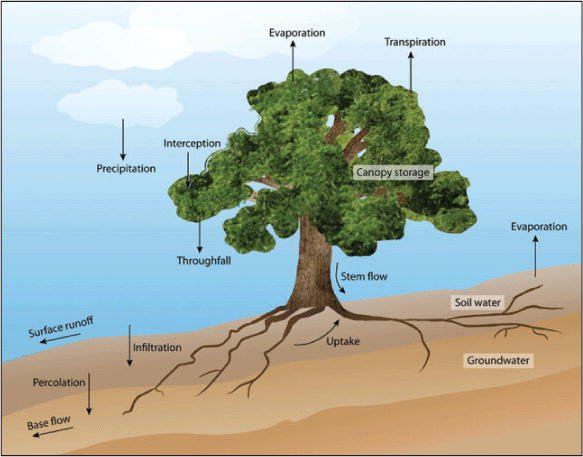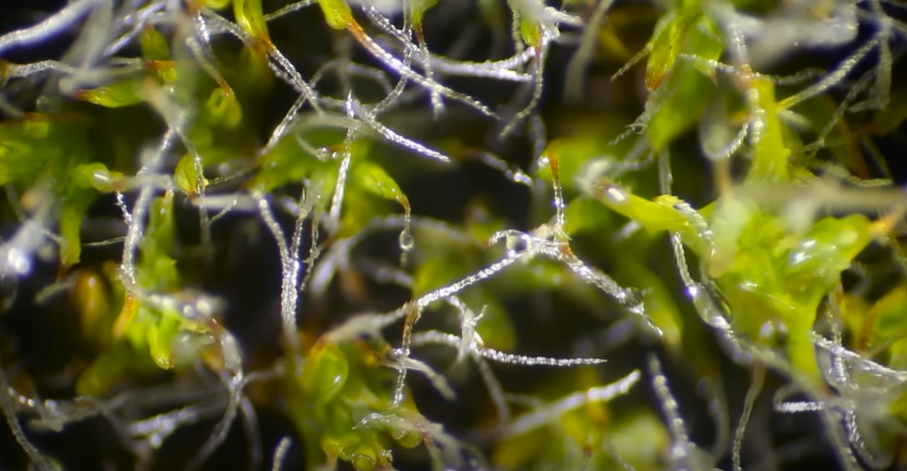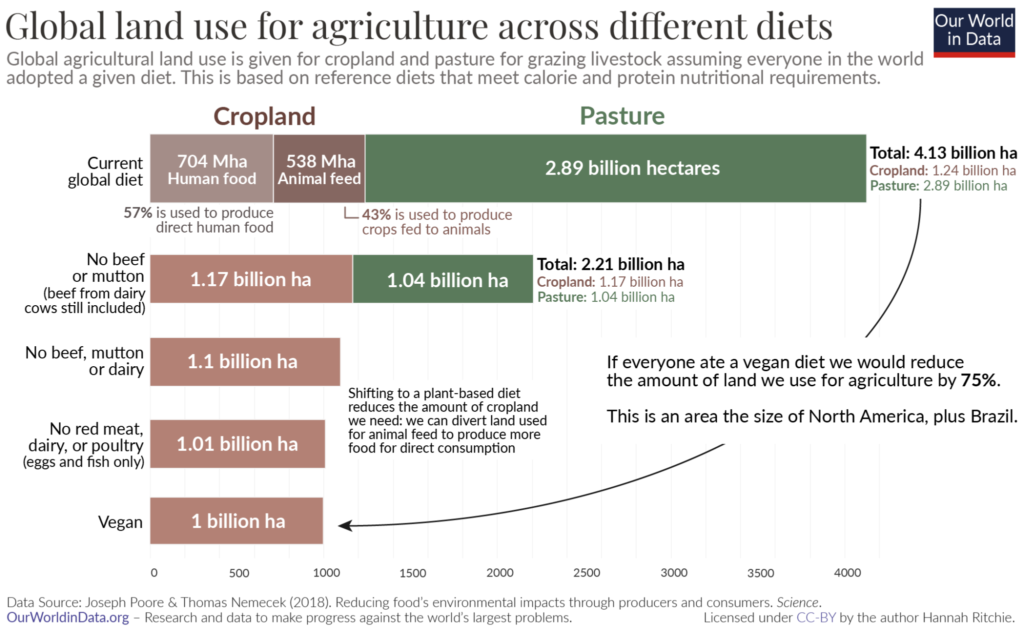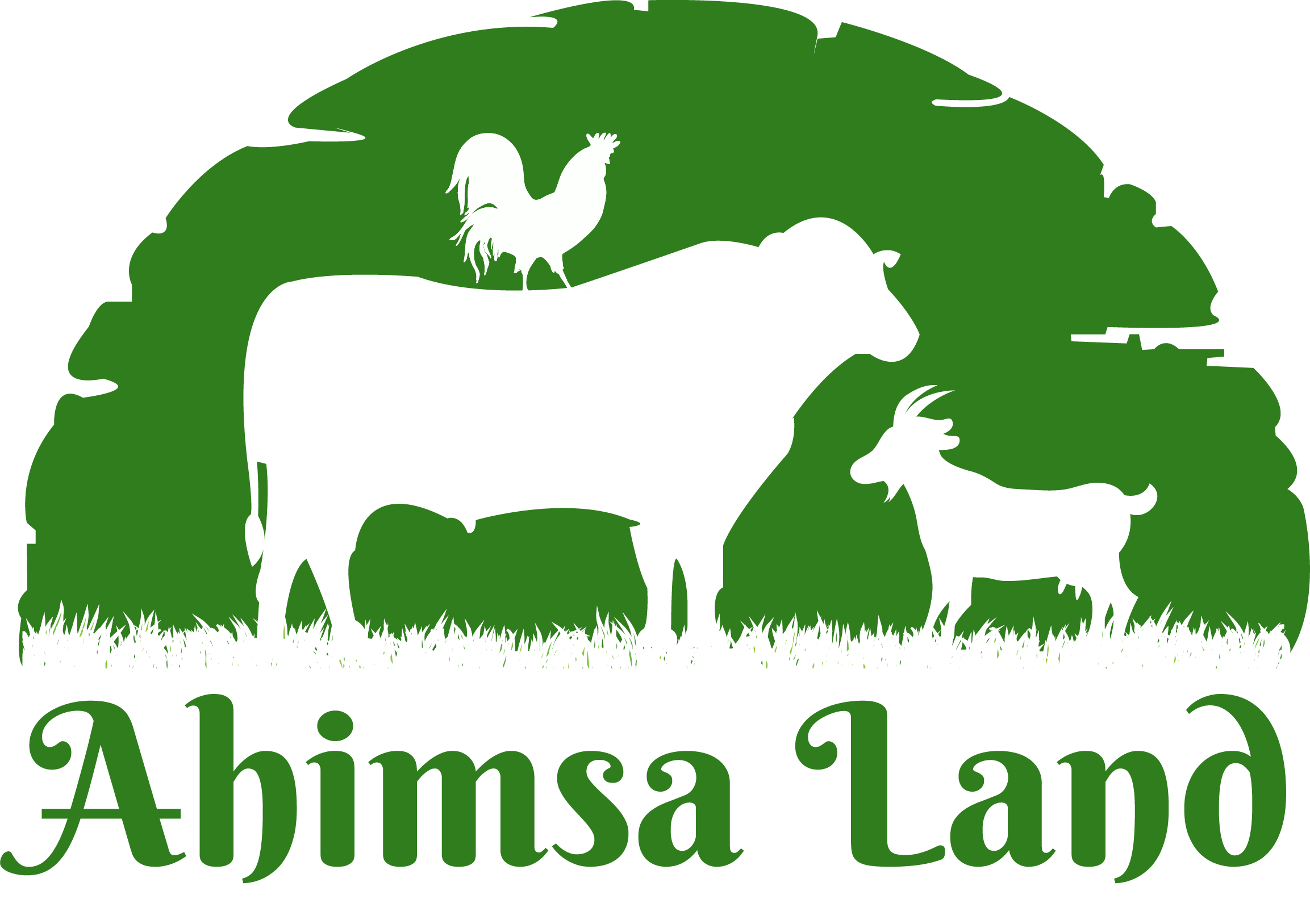We’ve all read about or experienced heavy rains leading to flooding and also heat waves or extremely dry hot weather both in urban and rural areas in recent years. Whether we’re young or old, live in cities or rural areas, in the north, east, west or south, or are in any continent in the world, we’ve all been affected in some way or the other by these climatic disasters. The most affected are those from the lower economic strata of society and mostly farmers whose livelihoods depend on the land. To understand what the drought-flood cycle is and how they are caused, we first need to understand water cycles in nature.
Trees are Magical

Did you know that 75 per cent of the world’s fresh water supply is made by forests? Yes, that’s right. Trees are magical. Fresh water and trees are inseparable elements of a cycle because there can’t be trees without water and water without trees. How does that work? The root system of trees draws water from the soil and carries it to the leaves, needles and branches. From there, water escapes into the atmosphere in the form of water vapour just like we humans sweat. This is called transpiration and is actually a very large part of the total precipitation that happens because of the large surface area of the leaves, needles, branches and trunks. In fact, almost 80 per cent of the world’s annual precipitation is released into the atmosphere through the process of evapotranspiration or ET. Trees also have the capacity to access and retrieve atmospheric moisture as well as nutrients from the air. When humid air or fog moves through trees, the moisture in it condenses on the surface area of tree leaves, needles, branches, and trunks and is transformed into water droplets. The tree also traps fine particles of dust, insect bodies, bird droppings, pollen spores, etc. around which the moisture condenses and forms droplets. These droplets from both either evaporate into the atmosphere or fall to the ground when they gather together and become heavy putting all the atmospheric nutrients in it into the soil and into the tree’s root zones.

Another way trees harvest water is when they intercept raindrops from clouds. When the raindrops hit the trees, they break up into a fine mist and some of the water is stored temporarily on the leaves and branches of trees. This is actually a huge amount of water because of the vast canopy of trees in forests. The mist is directed gently by the structure of the tree down the network of leaves and branches and down the trunk where it drips onto the soil below. This fine mist washes all the fine dust particles, pollen, and bird poop, etc. present in the air and on the canopy of the trees along with it. Because the leaves and other biomass from the trees have fallen below onto the sheltered land under them and decomposed, the soil below the tree is soft and spongy, and the water that falls onto this ground gets absorbed by the soil and is pulled by gravity through the earth until it emerges as a spring that feeds streams, rivers or wells or is taken deep down into the ground water tables. The rest of the water that doesn’t percolate through the soil flows gently down the slopes into streams, creeks, and rivers. The flow of this water is slowed down by the spongy soil enriched by mulch and other vegetation like grass and bushes on the surface. It’s interesting to know that the body of a tree both below the ground in its root system and above the soil on average is 50 per cent water. This is the invisible water reservoir on the tops and sides of hills and mountains, along coasts and in deep valleys alongside the very visible lakes and rivers we know as water reserves. The cycles of water interception and storage are essential to the life of trees because they allow them to feed on the nutrients present in the soil and help them continue to grow and multiply.

But what about trees and plants that grow in deserts where it rains just once or twice a year or don’t have roots that go deep down? Well some plants get all their water from condensation, fog or raindrops and they collect water throughout the year with special structures that help them do so. So, trees with their vast canopies and tiny plants with hardly any roots all around the world in different climatic conditions continue to collect water from the atmosphere even when it isn’t raining. A fleshy cactus with roots in dry sand or moss growing in a desert are good examples to understand this water collecting phenomenon that they have been using for millions of years.
Along with the moisture, trees also release fine pollen, leaf dust, fungus spores, bacteria, etc. These become the nuclei for raindrops to form around when they encounter moisture. This moisture is usually in the form of clouds formed over oceans and seas because of evaporation. These clouds move thousands of kilometres over land to the area above forests that has water vapour in organic particles. And when they meet, it rains. In fact, a study about the Amazon rainforest showed that it alone sends 8 million tonnes of water vapour back into the atmosphere each year where it forms its own rain clouds. Forests along the shores of the seas and oceans are the main sources for the transportation of water from the coast to interior regions because the water vapour goes from one mountain range to another travelling inland carrying this precious resource we can’t survive without.
The Drought-Flood Cycle
Agriculture is responsible for 80 per cent of deforestation worldwide. When we cut trees in forests for agriculture, we bare the land of the precious resources needed to keep the water cycles going. Barren land keeps receiving lower and lower rainfall because there are no trees to catch the water vapour and there are no raindrop nuclei in the clouds moving above. This in turn affects the amount of rainfall in the interiors as the system is broken. With no rain clouds to travel over land it results in droughts. Trees also slow the movement of water towards streams and rivers, keeping the flow of water steady. But when there are no trees for any biomass to fall to the ground and make the soil spongy, the land hardens and the rain that falls simply rushes off the land down empty barren slopes taking fine topsoil with it baring the land even more, and this water ends up as floods in low lying areas. This is the cycle of long droughts and sudden heavy flash floods we have been seeing more and more often in the last few decades. Forests are part of the circulation of atmospheric moisture, and we have been destroying them at an alarming rate, and one of the leading causes of the destruction of this invaluable environmental element is animal husbandry. Half of all habitable land is used for agriculture out of which more than 75 per cent is used for livestock production even though meat and dairy supply only 37 per cent of the world’s protein supply and 18 per cent of the world’s calorie supply and so farmers are a key element in this drought and flood cycle..

Farmers who raise sentient beings that are killed for human consumption feed them grains or other products manufactured from various crops and animal slaughter waste. Chickens are fed corn and soya mostly grown as mono crops over vast stretches of land, sheep in India are generally taken to graze on grass in open parts of cities and towns or in the forest in villages. Cows in villages are not only fed agricultural ‘waste’ in the form of leftover stalks of sugarcane, jowar, corn and soya but are also taken to graze on grass and shrubs in the forests nearby or they are fed grass grown specially for them on land that could be used to grow produce for direct human consumption. Cows in urban areas are fed factory manufactured cattle feed apart from the leftover stalks of sugarcane, jowar, corn, and soya beans. Fish farmers use rice and wheat bran, groundnut and cotton seed oil cakes, corn, and other leftovers of cereals like tur and chickpeas as feed. One would think that these are sustainable practices because a lot of the feed consists of naturally growing grass or products leftover from processing plants for human consumption. We couldn’t be more wrong. It’s not only the humungous amounts of plant matter used as feed for animals raised in the name of food that is the problem, but also the fact that a lot more land is being used up to graze these animals. Moreover, the biomass that needs to go back to land for the formation of rich fertile soil is being channelled to animals that we ultimately kill and eat. This cycle of hinsa or violence is what is affecting our rainfall and land.
If we look at natural forests that have been growing for centuries, we know that nothing from the forest ever comes out and whatever ‘waste’ is produced by the trees, shrubs, bushes, creepers, and animals living in those forests goes back to the land. This is the fundamental principle on which these forests thrive. The soil in these forests is nourished by the leaves, dried branches and other biomass that fall and the living micro-organisms that feed on these make nutrients that are necessary for the growth and survival of the trees available to them through cycles of consumption and creation. These forests thrive despite droughts or floods. Forests never get destroyed under floods nor dry up in the extreme conditions of droughts. During the monsoon period, water simply gets absorbed into the spongy soil and the excess drains gently away into streams and rivers, gradually ending up in ponds, lakes, seas and oceans. During extreme hot weather, the roots of trees reach deep down to access the stored water and pull it up and take it up to the branches and leaves. Trees also get water from fog and humid air. Agricultural fields cleared of all trees are also deprived of the necessary biomass in the form of leftover stalks of the crops like soya and corn because it is fed to animals raised for ‘food’. If this agricultural ‘waste’ is returned to the soil, it would not only decompose and create soil thriving with living microorganisms but also cover it to prevent evaporation. These two factors would make the soil spongy and absorbent, keeping it damp and fertile. So, when we feed precious agricultural ‘waste’ to animals, we create conditions for the soil to start depleting by breaking these precious water systems. Moreover, in thriving forests, seeds in the form of ripe fruits fall on to the ground and to ensure they remain safe and are not eaten by other animals or get infected with disease, nature provides them with a cover of leaves that have dried and fallen from the trees. The leaves also ensure that the soil below them remains moist and thus the fallen seeds germinate and grow into new tender saplings to grow into sturdy mature trees. When farmers graze cattle or sheep, these new saplings, which nature had protected to bring into existence, are eaten up by the animals thus preventing the growth of new trees essential for the survival and growth of forests.
The Solution

Globally, four billion hectares of land is being used for agriculture out of which three-fourths of it is being used for rearing animals, to grow crops to feed them and to graze them. If everyone shifted to a plant-based diet, global land use for agriculture could be reduced by 75 per cent or in other words we would require only one billion hectares of land instead of the four billion. Imagine what that means: three billion hectares of land would go back to rewilding. India holds only 2.29 per cent of the land area of the world and around 60 per cent of Indian land is under cultivation. But with 10.71 per cent of the world’s livestock in India, a major chunk of this land is being wasted. In India, deforestation has caused a 30 per cent drop in rainfall. We need to bring more land under forests and tree cover if we want to help reverse this and prevent more severe cycles of drought and floods. How can we do that? Keeping the above land use in mind, the solution is obvious and so simple, isn’t it? Our farmers must move away from animal husbandry and move to plant-based agriculture for human consumption where all the biomass is returned to the soil. It is imperative for farmers to stop using more and more land to grow mono crops like corn and soya for animals and instead start growing more trees, especially indigenous and fruit trees or food forests with produce for the direct consumption of humans. As for consumers, we need to eat more produce from trees than from grains, pulses, cereals, legumes and vegetables grown as monocrops. Forests are huge sponges of atmospheric moisture and are the guardians of life on earth so to speak. Farmer suicides in India are at an all time high and if the farmer wants to save himself, he will have to make better farming choices. As for consumers, it’s time we started protecting forests from our destructive desire for the taste of animal flesh and secretions.
